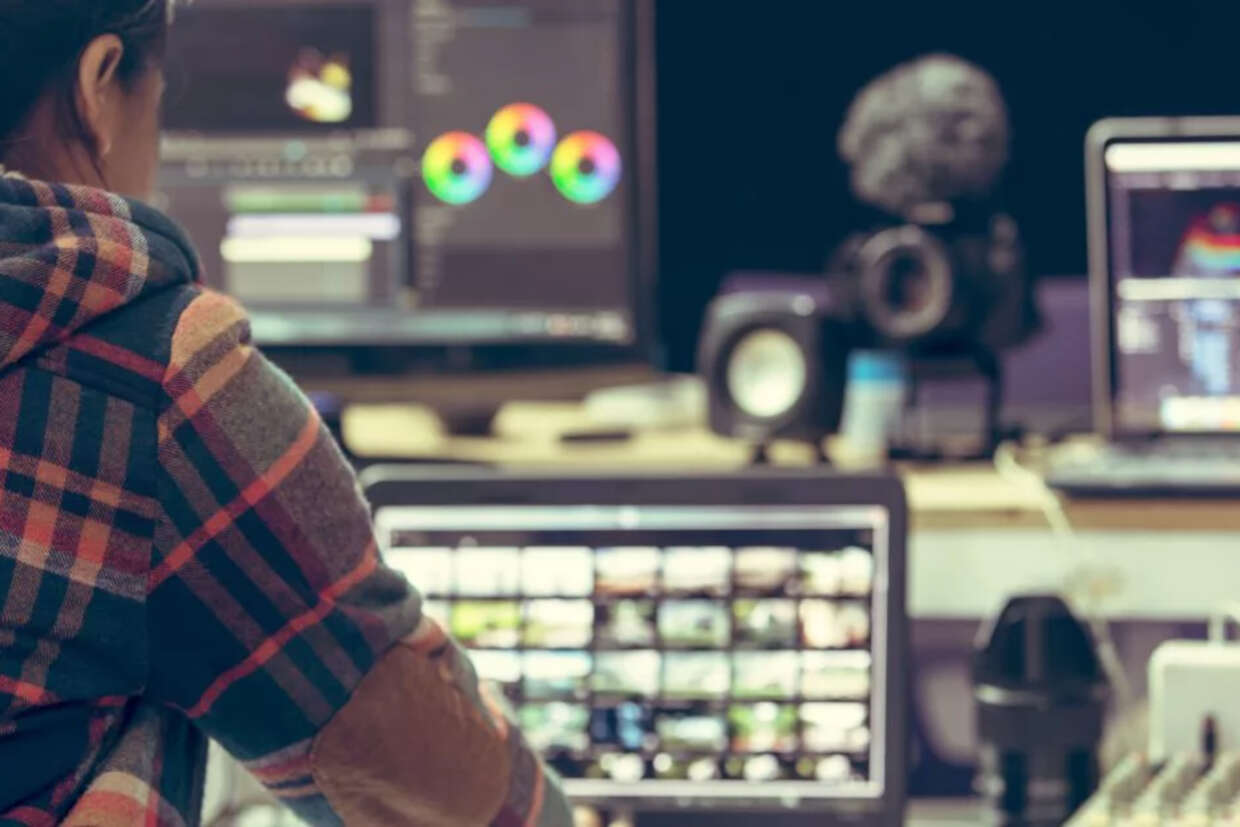Tape storage has been a popular video archive medium for years, but its lifetime is limited. This puts your media at risk. Digitisation future-proofs and enables easier search and retrieval for future generations, unlocking its true lifetime value.
A huge amount of humanity’s cultural heritage is preserved on magnetic tape storage. But the clock is ticking for this fragile and outdated storage system. According to UNESCO, 200 million hours of irreplaceable audio-visual content is at risk of being lost forever. This is because tape degrades, and the obsolete equipment required to play it has become problematic to repair or replace.
2025 is Tape Storage Judgement Day
The general consensus among audio-visual experts is that the large-scale transfer of magnetic tape recordings will cease around 2025. The message is clear - digitise your archive before this date or risk it being lost forever.
UNESCO’s Magnetic Tape Alert Project even aims to alert institutions to the imminent threat of losing potentially irreplaceable data.
You can check out the addendum at the end of this article for a list of popular tape storage formats. If you're using a format on this list then you need to act now.

How LTO can you go? Why cloud storage beats tape
Considered on up-front cost alone, a tape archive may still seem competitive, but its ongoing costs mean that cloud storage can be more cost-effective.
Tape Digitisation Success Stories
Some organisations and even countries have already taken action. The Netherlands, for example, completed its efforts to digitise 90,000 hours of video, 20,000 hours of film and 100,000 hours of recorded audio held by Dutch heritage organisations. It took seven years and cost €115 million.
Meanwhile, in a project called Deadline 2025, Australia’s National Archives are racing to digitise their tape storage libraries, which hold 130,000 hours of audio and video.
Obsolete Hardware is a Risk
The task will cost around AUD $10 million, but funding isn't the only issue. Crucial to the project is working playback equipment to read the magnetic tapes before digitisation can commence. The situation is so desperate that archivists are currently scouring eBay and Gumtree to find suitable machines.
As well as degradation, tape storage media is also at risk of damage, as highlighted by the fire at Universal Studios in 2008. This destroyed several famous backlots, but also swept through a warehouse containing around 120,000 original master recordings, from dozens of major music artists of the 20th century. It was described as the biggest disaster in the history of the music business.
Tape Storage - The Key Points
- Experts estimate videotape has a maximum lifespan of 30 years when stored in optimum conditions.
- The greatest risk for video collections lies in the loss of playback equipment.
- The magnetic head in tape players only last about 5,500 hours before it needs replacing.
- Videotape that is not digitised within the next five years will, in many cases, be lost forever.
- Valuable content, ripe for monetisation, could be rotting away within your business or organisation.
But it’s not just academia and the entertainment industry that are worried. The same warning applies to any company that has a library of material stored on tape. The message is clear – digitise it now before you lose it forever.
Not only does digitisation ensure the preservation of the source material, but tools such as Imagen’s cloud-based archive system enable easier search and retrieval. This, in turn, unlocks its true value.
Time to Act
It’s not too late to digitise your tape storage libraries, but you need to act now. This is easy to do at the highest possible quality thanks to Imagen’s automated systems. Furthermore, the newly digitised content is securely backed up in the cloud and accessible at any time, from anywhere.
Importantly, this will not only preserve your archive, but it will allow you to monetise it much more easily too.

Applying best practice to the video management problem
Find out how leading companies like the BBC, BP, ATP Media and Reuters use Imagen to unlock value from their video.
Addendum: Endangered Tape Formats
Although now obsolete, videotape was hugely successful for a long time. There were 37 types of professional and consumer tape formats available in the UK and Europe between 1961 and 2016. Here’s a guide to the major formats on the endangered list. If you’re still using one of the below, the time to act is now…
1 Inch Tape
This analogue videotape system was introduced by Ampex back in 1965, mainly for use in industry rather than television production. In 1976, Type B was developed by Bosch and adopted by TV studios across mainland Europe. Then a joint project by Ampex and Sony saw the release of Type C. This became the most popular 1-inch format in most other territories.
U-Matic
Developed by Sony and introduced in 1971, this analogue format employed ¾ inch tape. It was popular in industry, education and TV, and was in use for some 25 years. The high-band BVU (Broadcast Video U-Matic) arrived in 1976, and U-Matic SP (Superior Performance) in the early 1990s. The format is still widely used as an archival system.
VHS
Launched by JVC in 1976, VHS (video Home System) was designed for consumer use. However, it was often used to store video for use in education, marketing and business too. The format progressed to incorporate the higher-bandwidth Super VHS (S-VHS) and Digital-VHS (D-VHS), which arrived in 1998. VHS famously competed with Sony’s Betamax format, eventually gaining dominance. The last Hollywood movie to be released on the VHS format was A History of Violence in 2006.
BETACAM
Sony introduced the Betacam ½ inch professional analogue video format in 1982, and a higher quality version, Betacam SP, in 1986. These were superseded by Digital Betacam in 1993, and Betacam SX, the digital version of Betacam SP. Despite the name, the Betacam family is not compatible with its consumer cousin, Betamax.
MII
This professional analogue video system uses ½ inch metal tape for recordings of up to three hours. It was developed by Panasonic in 1986 as a competitor to Sony’s Betacam SP. MII is an evolution of the failed M format, which itself was derived from VHS.
D-1
Introduced by Sony in 1987, D1 was the first digital videotape format. It stored its data uncompressed on ¾-inch tape, providing very high picture quality, and found favour in high-end graphics and animation production. D-1 eventually made way for D-2, developed by Ampex in 1988. D-3 was created by Panasonic in 1991 to compete with D-2. High-definition D-5 arrived in 1994, courtesy of Panasonic. D-4 was skipped as it’s similar to the phrase for ‘death’ in Japanese.
DV
The standard for digital video was launched in 1995 by a consortium of camcorder manufacturers. It spawned a number of professional tape-based systems, such as DVCPRO by Panasonic and DVCAM from Sony. The format was superseded by the high-definition variant, HDV, in 2003.
HDCAM
HDCAM is the high definition version of Digital Betacam, introduced by Sony in 1997, which records native 16:9 at 1920×1080. The format was upgraded in 2003 to HDCAM SR with higher density tape for better colour reproduction.




